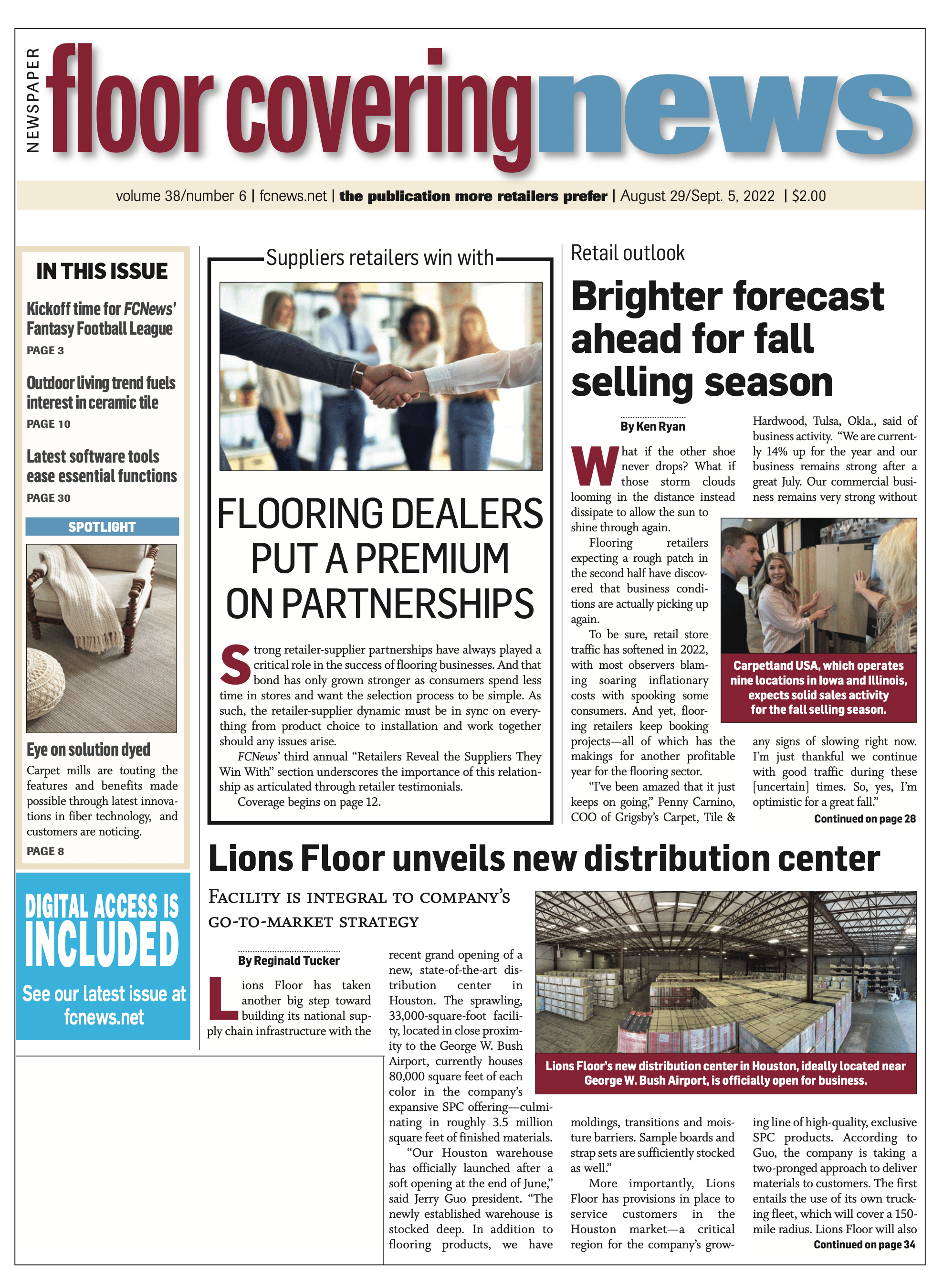 By Heidi Steele—With a dizzying array of flooring alternatives today, selecting appropriate finish materials intelligibly is more important than ever. Flooring trends are constantly evolving, waxing and waning in looks and demand as each season passes. Following are some of the key drivers we are seeing:
By Heidi Steele—With a dizzying array of flooring alternatives today, selecting appropriate finish materials intelligibly is more important than ever. Flooring trends are constantly evolving, waxing and waning in looks and demand as each season passes. Following are some of the key drivers we are seeing:
What’s old is new again
One of the fastest-growing trends in flooring is a return to classic, natural materials that grow more beautiful as their finely aging character develops over time. The most popular materials date back to the ancient Greek, Egyptian and Roman civilizations. Prized for their classic good looks, off-the-charts durability and ease of maintenance, these floor styles perfectly align with today’s demand for organic materials and designs that enhance well-being.
The materials that are becoming more relevant every day range from cork, terrazzo, natural stone and hardwood, to ceramic tiles, wool and other natural fiber carpets. Recently, porcelain tile and terrazzo have taken significant share from hardwood and stone flooring thanks to their more diverse visual designs, higher damage resistance and ease of maintenance.
What’s driving a return to these classic floors is their obvious enduring beauty. Perfectly suited for projects with constant, heavy foot traffic and rolling loads, these floors require minimal maintenance but offer long-term solutions.
Safety considerations
Whether installed indoors or outdoors, safety should be a primary consideration as slip and falls are the leading category of lawsuits across commercial facilities of all types. Investing up front in high-quality flooring materials that meet or exceed ASTM International walking safety ratings will always provide an outstanding return on investment.
Other qualities to look for include surface cleanability, damage and stain resistance and low maintenance. After selecting floors that meet these criteria, initiating a well-executed maintenance program that addresses daily, periodic and annual goals will keep floors looking and performing their best.
Emphasis on sustainability
The built environment is fast approaching a place of no return, where a product’s environmental impact is weighed equally alongside economic and design considerations. Finding floors that meet global sustainability standards can be daunting.
Thankfully, options for this category increase exponentially every year as manufacturers embrace an eco-friendly role by implementing a growing scale of climate-positive practices. As the climate conversation merges with our daily lives, more healthy, carbon-neutral flooring collections are entering the market. More options than ever before are being offered as this category sees rapidly escalating growth.
Outdated myths challenging their popularity are now easily proven false. Among these clear truths, climate-positive floors are often at similar or sometimes even lower price points than their counterparts without third-party, eco-credentials. Globally, manufacturers have sharpened their production methods and sources, making these solutions more affordable to a much larger customer base as demand increases.
Whether you’re looking to capitalize on the growing demand for classic floors based on trendy visuals or inherent performance characteristics, flooring professionals can count on one thing: quality, durability and sustainability will never go out of style.
Heidi Steele is the founder of Surface Resources, a wholesale distribution company dedicated to sourcing resilient flooring and tiles for clients in the Southwest U.S. Her cross-disciplinary background, which includes more than two decades as an architect and interior designer, gives her a holistic perspective of the flooring industry.

